Let’s look at some bunkai (applications for techniques found in kata) again!
Last time we did kakete, “hooking hand”, and I think it’s the most read post on this site ever! So today, let’s do another one!
The technique of today is the “Monk’s Salutation” found in kata like Jion, Bassai Dai, Jitte, Chinte (only in Shotokan), Jiin and perhaps some other obscure kata.
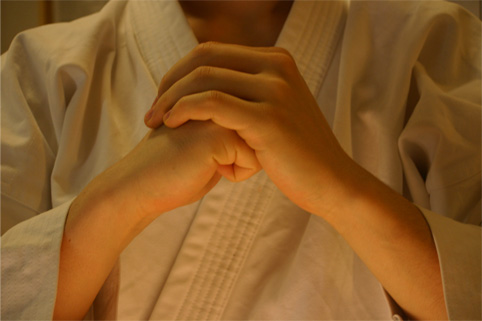
The move in itself is not that hard to do, you simply place the right fist in the left.
Historically speaking, it is believed that this salutation was originally used among Chinese secret societies who opposed the rule of the Ching and wanted to re-establish the Ming dynasty. The symbolic meaning of the salutation is the Ming dynasty, with the sun represented by the closed right hand, and the (half)moon by the left. Today it is still used in many Kung fu schools.
So, the move is a salutation? Can it have a deeper meaning than simply saluting? Yes, I think so. If the salute with the bo (in Kobudo) has bunkai, then why shouldn’t the empty hand salute have a bunkai?
At least many techniques seem to fit quite nicely…
Now, before I give you the pictures where my loyal slav… oops I mean colleagues Viktor and Vincent show the bunkai, I want to explain one thing: It’s easy to place your hands in the appropriate position for a bunkai, but hard to actually do it “from zero” (the opponent attacking). Now matter how fancy it looks, if you can’t easily make it from square one to the last position, then it isn’t practical.
And if it isn’t practical, it’s most likely wrong.
Lastly, since they are only showing the last positions here, (one picture/bunkai) it’s hard to see the details. For example, look at this one:

Looks like some sort of… wrist lock, right? Nope. A detailed shot reveals it’s a thumb lock:
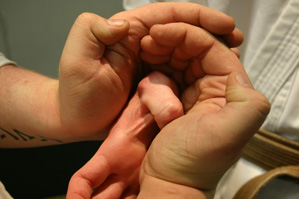
This applies to many of the pictures. They are often not what they look like.
Anyway, enough with the talking, here’s the other 41 bunkai to Monk’s Salutation:
The last empty spot is for the one we did in the intro (thumb lock), making it a total of 42. Today we only had 20 minutes to take these photos, so I believe it is possible to do around 50-60 with more time, without altering the hand formation too much!
Salute!
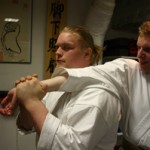
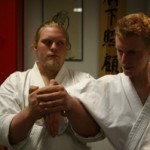
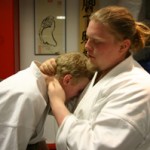
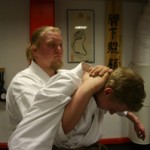
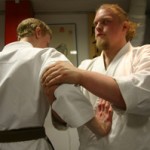
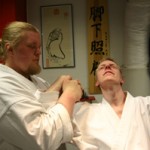

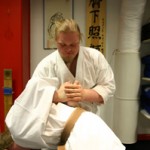
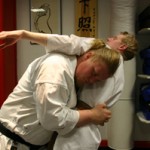

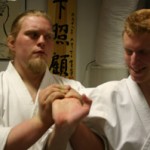
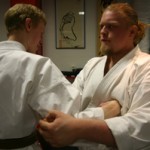
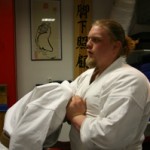
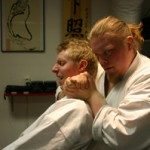
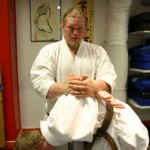

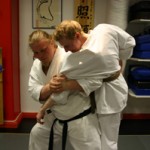
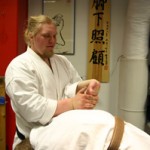
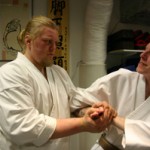
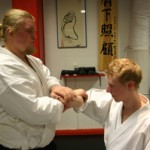
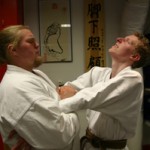

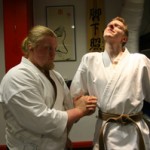
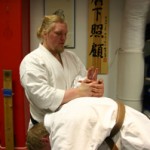
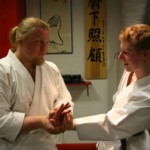
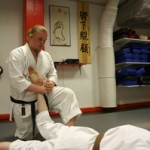
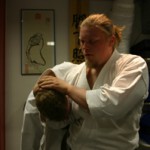



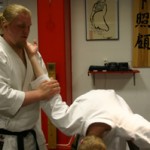
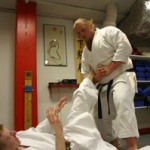
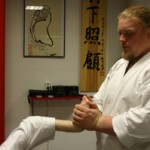





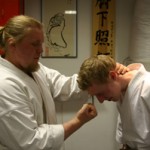
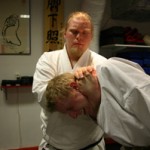
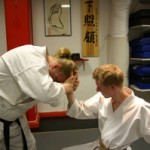
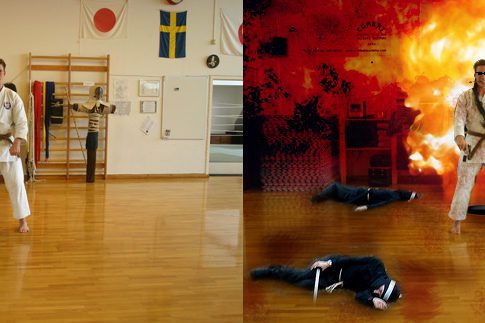


18 Comments